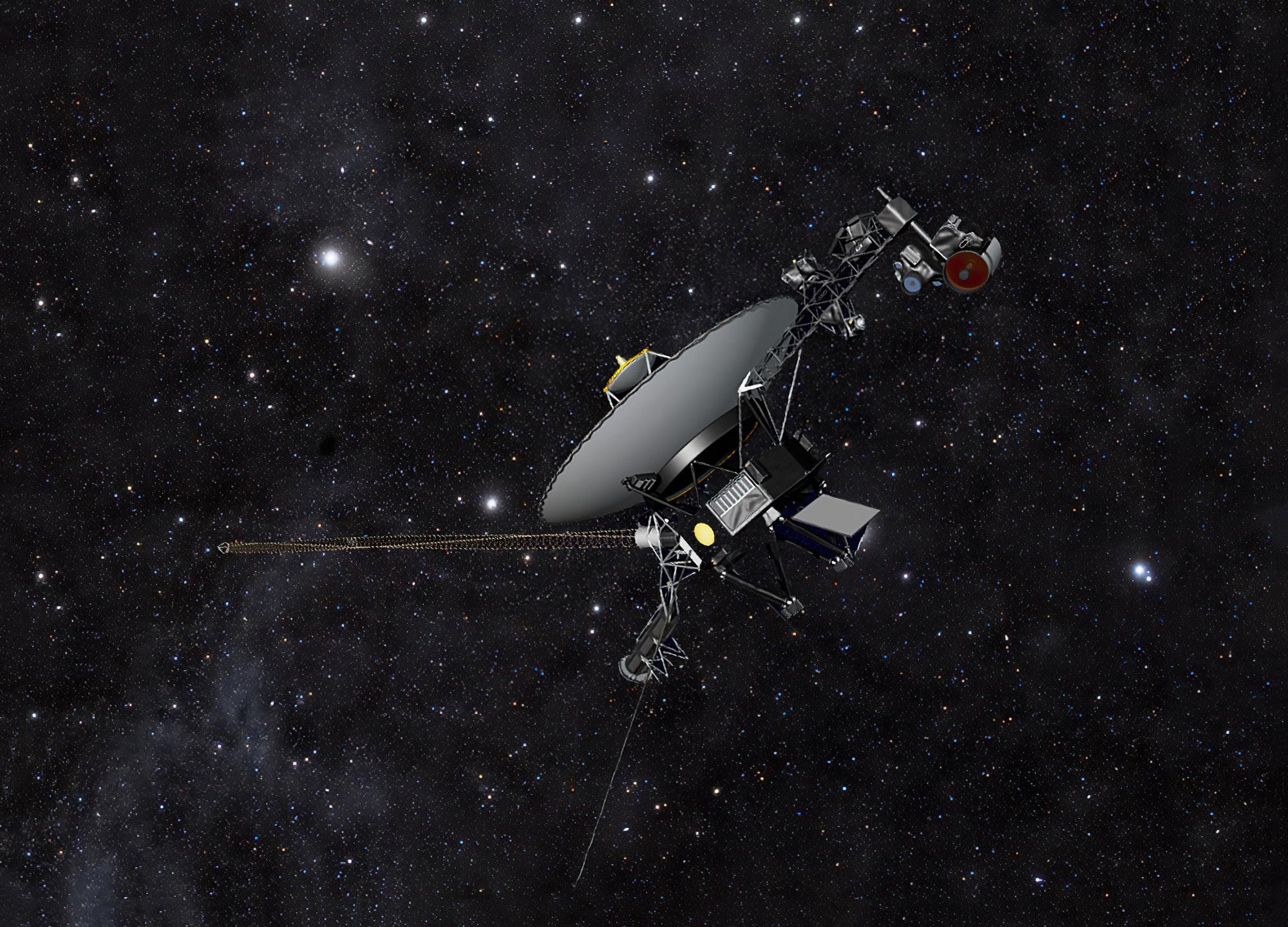

Il concetto di questo artista mostra la navicella spaziale Voyager della NASA contro un campo di stelle nell’oscurità dello spazio. Le due navicelle Voyager stanno viaggiando sempre più lontano dalla Terra, in un viaggio nello spazio interstellare, e alla fine orbiteranno intorno al centro della Via Lattea. Credito: NASA/JPL-Caltech
Il piano manterrà gli strumenti scientifici di Voyager 2 in funzione per alcuni anni in più rispetto a quanto previsto in precedenza, consentendo più scoperte dallo spazio interstellare.
Lanciato nel 1977, il veicolo spaziale Voyager 2 si trova a più di 12 miliardi di miglia (20 miliardi di chilometri) dalla Terra, utilizzando cinque strumenti scientifici per studiare lo spazio interstellare. Per aiutare a mantenere in funzione questi dispositivi nonostante la diminuzione dell’alimentazione, il vecchio veicolo spaziale ha iniziato a utilizzare un piccolo serbatoio di alimentazione di riserva messo da parte come parte di un meccanismo di sicurezza a bordo. La mossa consentirebbe alla missione di ritardare la chiusura di uno strumento scientifico fino al 2026, invece che quest’anno.
Spegnere uno strumento scientifico non finirà il lavoro. Dopo aver spento uno strumento nel 2026, la sonda continuerà ad alimentare quattro strumenti scientifici fino a quando un alimentatore basso non richiederà lo spegnimento di un altro. Se Voyager 2 rimane in buona salute, il team di ingegneri si aspetta che la missione continui per gli anni a venire.

Il modello di prova della Voyager, esposto nella sala di simulazione spaziale del JPL nel 1976, era una replica esatta delle sonde spaziali Voyager gemelle lanciate nel 1977. La piattaforma di rilevamento del modello si estende a destra, tenendo diversi strumenti scientifici della navicella nel pubblicarlo . posizioni. Credito: NASA/JPL-Caltech
Voyager 2 e il suo gemello, Voyager 1, sono gli unici due veicoli spaziali ad operare al di fuori dell’eliosfera, la bolla protettiva di particelle e campi magnetici generati dal sole. Le sonde aiutano gli scienziati a rispondere a domande sulla forma e sul ruolo dell’eliosfera nella protezione della Terra da particelle energetiche e altre radiazioni nell’ambiente interstellare.
ha affermato Linda Spilker, scienziata del progetto Voyager[{” attribute=””>NASA’s Jet Propulsion Laboratory in Southern California, which manages the mission for NASA.
Power to the Probes
Both Voyager probes power themselves with radioisotope thermoelectric generators (RTGs), which convert heat from decaying plutonium into electricity. The continual decay process means the generator produces slightly less power each year. So far, the declining power supply hasn’t impacted the mission’s science output, but to compensate for the loss, engineers have turned off heaters and other systems that are not essential to keeping the spacecraft flying.
With those options now exhausted on Voyager 2, one of the spacecraft’s five science instruments was next on their list. (Voyager 1 is operating one less science instrument than its twin because an instrument failed early in the mission. As a result, the decision about whether to turn off an instrument on Voyager 1 won’t come until sometime next year.)

Each of NASA’s Voyager probes are equipped with three radioisotope thermoelectric generators (RTGs), including the one shown here. The RTGs provide power for the spacecraft by converting the heat generated by the decay of plutonium-238 into electricity. Credit: NASA/JPL-Caltech
In search of a way to avoid shutting down a Voyager 2 science instrument, the team took a closer look at a safety mechanism designed to protect the instruments in case the spacecraft’s voltage – the flow of electricity – changes significantly. Because a fluctuation in voltage could damage the instruments, Voyager is equipped with a voltage regulator that triggers a backup circuit in such an event. The circuit can access a small amount of power from the RTG that’s set aside for this purpose. Instead of reserving that power, the mission will now be using it to keep the science instruments operating.
Although the spacecraft’s voltage will not be tightly regulated as a result, even after more than 45 years in flight, the electrical systems on both probes remain relatively stable, minimizing the need for a safety net. The engineering team is also able to monitor the voltage and respond if it fluctuates too much. If the new approach works well for Voyager 2, the team may implement it on Voyager 1 as well.
“Variable voltages pose a risk to the instruments, but we’ve determined that it’s a small risk, and the alternative offers a big reward of being able to keep the science instruments turned on longer,” said Suzanne Dodd, Voyager’s project manager at JPL. “We’ve been monitoring the spacecraft for a few weeks, and it seems like this new approach is working.”
The Voyager mission was originally scheduled to last only four years, sending both probes past Saturn and Jupiter. NASA extended the mission so that Voyager 2 could visit Neptune and Uranus; it is still the only spacecraft ever to have encountered the ice giants. In 1990, NASA extended the mission again, this time with the goal of sending the probes outside the heliosphere. Voyager 1 reached the boundary in 2012, while Voyager 2 (traveling slower and in a different direction than its twin) reached it in 2018.
More About the Mission
Jet Propulsion Laboratory (JPL), a division of Caltech in Pasadena, built and operates the Voyager spacecraft. The Voyager missions are a part of the NASA Heliophysics System Observatory, sponsored by the Heliophysics Division of the Science Mission Directorate in Washington.

“Sottilmente affascinante social mediaholic. Pioniere della musica. Amante di Twitter. Ninja zombie. Nerd del caffè.”





More Stories
Un decesso per il virus del Nilo occidentale è stato segnalato nella contea di Santa Clara – NBC Bay Area
Ultime notizie sugli astronauti della NASA: aggiornamento sull’equipaggio del Boeing Starliner bloccato nello spazio
Ci sono oceani sotto la superficie di Marte? La sonda InSight della NASA rivela un enorme serbatoio di acqua liquida